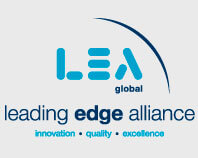Like many businesses, you may have put off implementing the necessary changes required to align your business with the new revenue recognition accounting standards. These standards, set by the Financial Accounting Standards Board (FASB), became effective this year for annual reporting periods, and in 2020 for interim periods. Although the standards took effect on January 1 for calendar year reporting periods, there is still time to comply, but manufacturing companies should act now to avoid time-intensive adjustments during a year-end audit or review.
Adopting The New Revenue Recognition Standards
To meet the core objectives of the new standards, your manufacturing business should apply the following steps:
- Step 1: Identify the contract(s) with a customer.
- Step 2: Identify the performance obligations with a customer.
- Step 3: Determine the transaction price.
- Step 4: Allocate the transaction price to the performance obligations in the contract.
- Step 5: Recognize revenue when (or as) the entity satisfies a performance obligation.
The impetus for the change is FASB ASU 2014-09, with subsequent amendments, which was initiated several years ago to provide an approach for recognizing income that more accurately depicts the transfer of promised goods and services. It applies to any entity entering into a contract for the transfer of goods or services – or the transfer of non-financial assets – unless the contract falls within the scope of other accounting standards.
Challenges For Manufacturers
These five steps create challenges for all business entities, but manufacturers in particular face complex issues, including:
Customer Control
The new standard requires customers to obtain control of products before revenue is recognized. But a change in “control” isn’t always obvious when manufacturers ship products.
For instance, manufacturers often ship products under “freight on board” (FOB) shipping point terms. Traditionally, control shifts to the customer once the product has been loaded into the hauling truck, but other arrangements may cover products in transit. Thus, revenue recognition may have to be divided.
Similar issues arise in bill-and-hold arrangements involving the sale and warehousing of products. In determining whether a customer has gained “control,” a manufacturer must consider if the customer has legal title to the products with a corresponding right for the manufacturer to receive payment.
Customized Products
Previously, accounting standards didn’t cause a manufacturer to realize revenue on customized products until the products were completed and transferred to customers. ASU 2014-09 requires revenue to be recognized over time for customized products that have no alternative use and for which there is an enforceable payment right. Thus, a manufacturer may recognize a portion of income during the production process.
Financing
Under the new standards, a manufacturer must evaluate contracts to determine if there’s a significant financing component. If one exists, the firm must determine if separate obligations exist for the sale and the financing. Generally, a division would result in revenue being realized for the sale portion first and then for the financing portion over time.
A safe-harbor rule for contracts of one year or less provides that the firm doesn’t have to factor in the time value of money for the financing component.
Discounts
Discounts on the price of goods must be factored into the allocation of a purchase price upon completion of the performance obligation. For example, discounts may be provided when goods and services are bundled or on a stand-alone basis. For volume discounts that are customary, no special allocation is required. However, special consideration under ASU 2014-09 must be given to deep discounts that are outside the normal scope of business.
Bundled Services
When services are bundled with contracts, a manufacturer may be required to treat the services as a separate obligation. Accordingly, revenue from services is typically recognized over time. Manufacturers must assess contracts involving bundled services to determine the recognition of revenue from separate obligations.
Warranties
Generally, manufacturers offer warranties on the products they provide. Under ASU 2014-09, warranties are classified into two types.
-
- Assurance warranties: Customers are assured that products will function as intended because they comply with certain specifications.
- Service warranties: Customers are entitled to additional benefits that are not part of the agreed-upon specifications.
Most assurance warranties aren’t treated separately unless the customer has the option of purchasing the warranty separately from the product. Conversely, service warranties are treated as separate performance obligations.
Contract Costs
These are costs incurred by a manufacturer while delivering its products to customers as per the contract. Under the new standards, incremental costs associated with a contract – such as sales commissions and fulfillment costs not contemplated – generally are capitalized when these costs are expected to be recovered and are directly related to the contract. These capitalized costs then must be amortized in a systematic manner.
Despite these challenges, the time to act is now. Implementation of the new revenue recognition standard in a timely manner can be daunting, but compliance shouldn’t be shifted to the back burner. Otherwise, you may risk significant effort to make adjustments at the last minute.
Get More Information
For more information about implementing revenue recognition standards for your manufacturing business, contact Alana Mueller or David Kloess by calling 770.396.2200.





